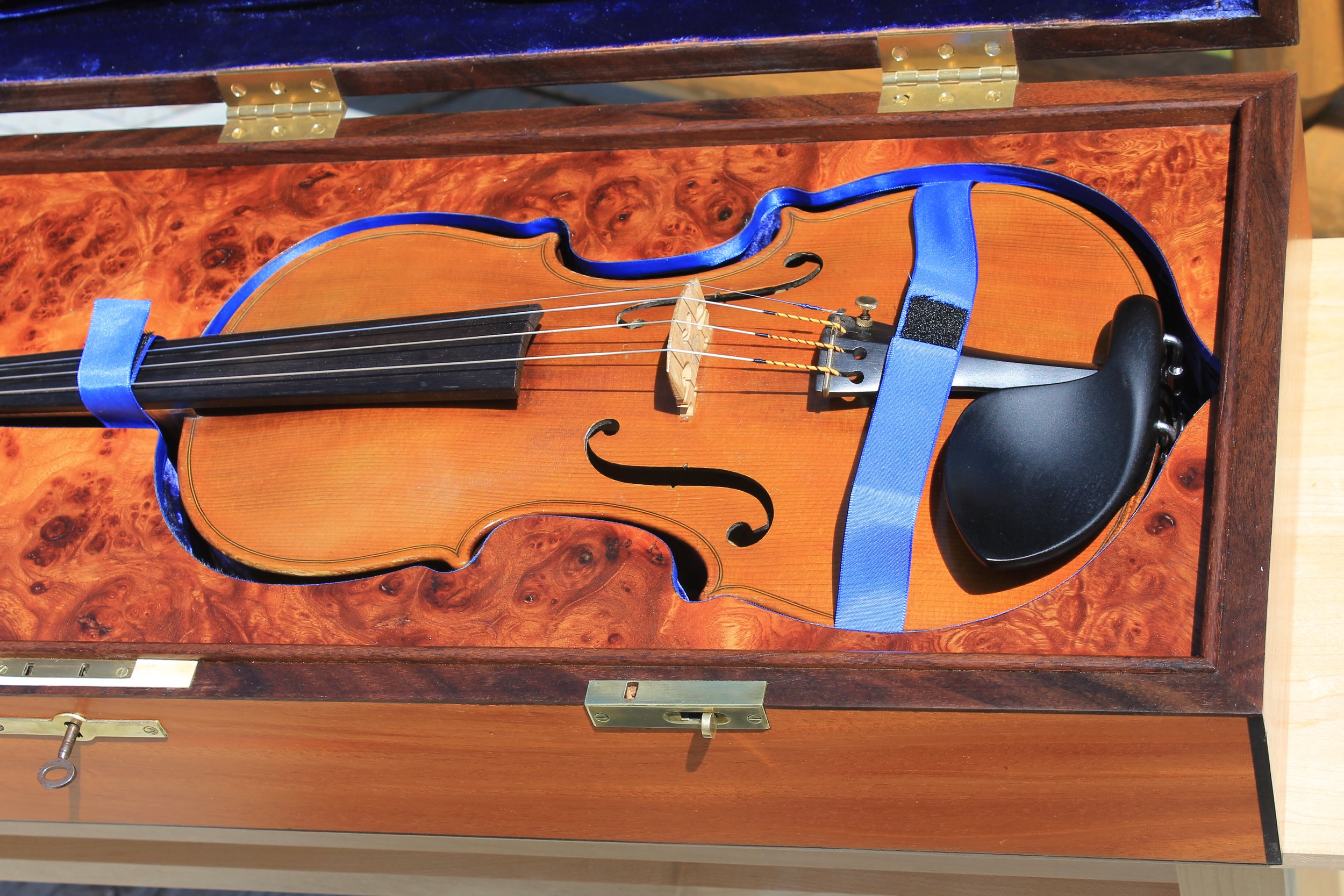The making of this single violin case was inspired by images of several of the surviving 12 Apostle violin cases made in the 1840’s and later by the renown violin firm of William Hill, London. Each of those cases was hand crafted to an exceptionally high standard featuring rich exotic hard wood, elaborate inlay and marquetry work (probably of French design and execution) as well as custom made brass hardware including hinges, sliding catches and locks. The interiors were trimmed in the sumptuous velvet of the Victorian era. Each case typically housed a Stradivari violin or similar rare violin and was used to proudly display the instrument in the drawling rooms of the very well heeled of the day.
This then, is my take on one of those cases. Not an exact copy or reproduction for sure and working only from photographs the dimensions and proportions were adjusted to fit my own, far more modest, English violin made by Job Ardern in 1904.
By far, the most challenging project I have thus far undertaken. The domed lid required careful construction of a curved mold and form to apply the sawn mahogany veneers for the outside and interior. The maple and ebony inlays required precision cutting and fitting as did the centre fan and corner quarter fans. Each segment of the fans was carefully hot sand shaded to scorch the edges thus creating the three dimensional illusion.
I am indebted to Dr Glenn P. Wood for making his extensive library of images available to me as well as gifting to me the original W.E. Hill brass sliding catches, as well as the diminutive lock (with original barrel key) and the ebony spinners for holding the violin bows inside. For more on the history of violin cases I thoroughly recommend Glenn Wood’s excellent book “The Art and History of Violin Cases”
The 13th Apostle
Interior of case: Carpathian Elm Burl and marquetry inlay for the compartment lid. Royal blue velvet lining. Brass hardware is original W.E Hill solid brass hardware salvaged from an old irreparable case and kindly donated to me by Dr. Glenn. P Wood - author of the only book dedicated to antique violin cases.


